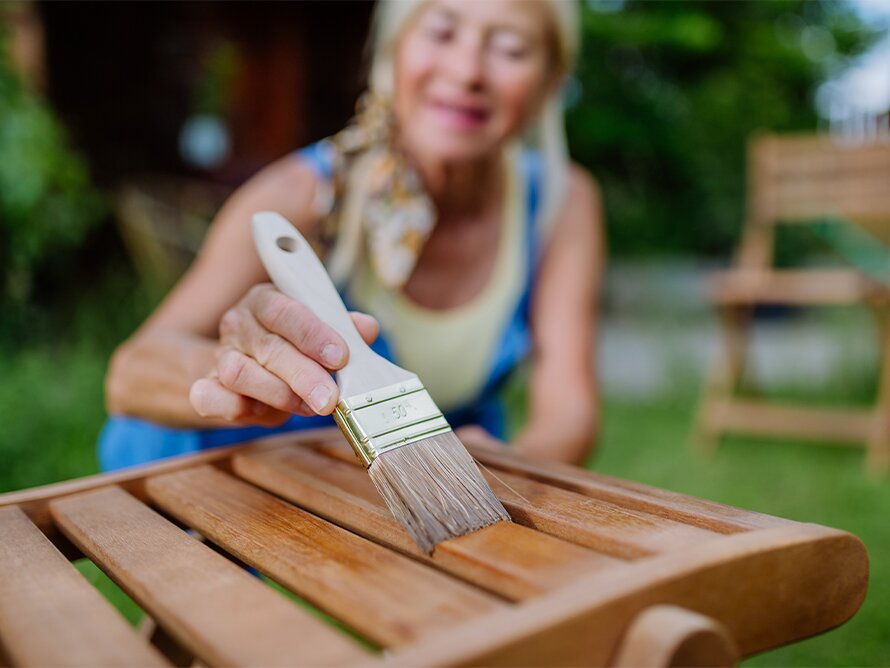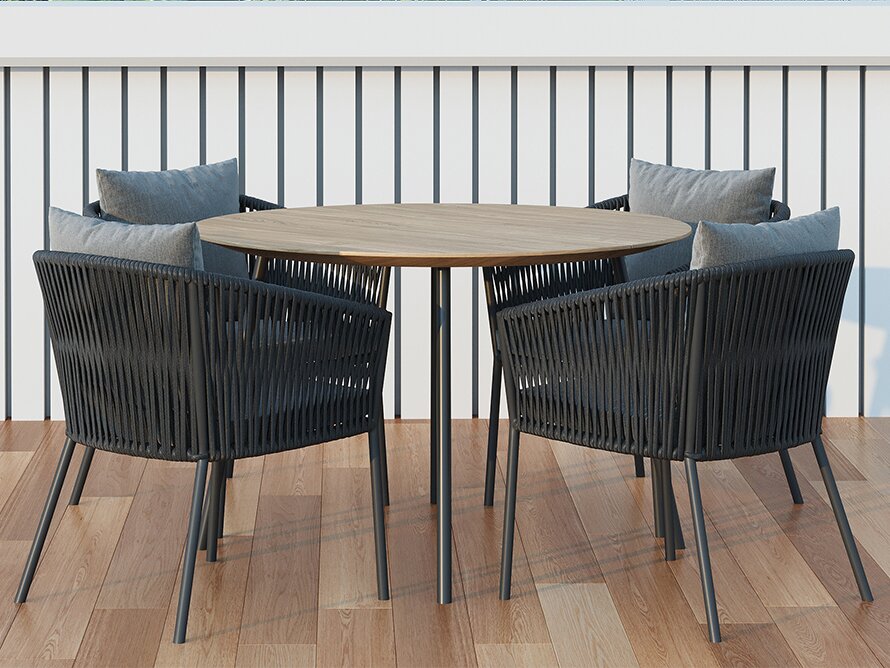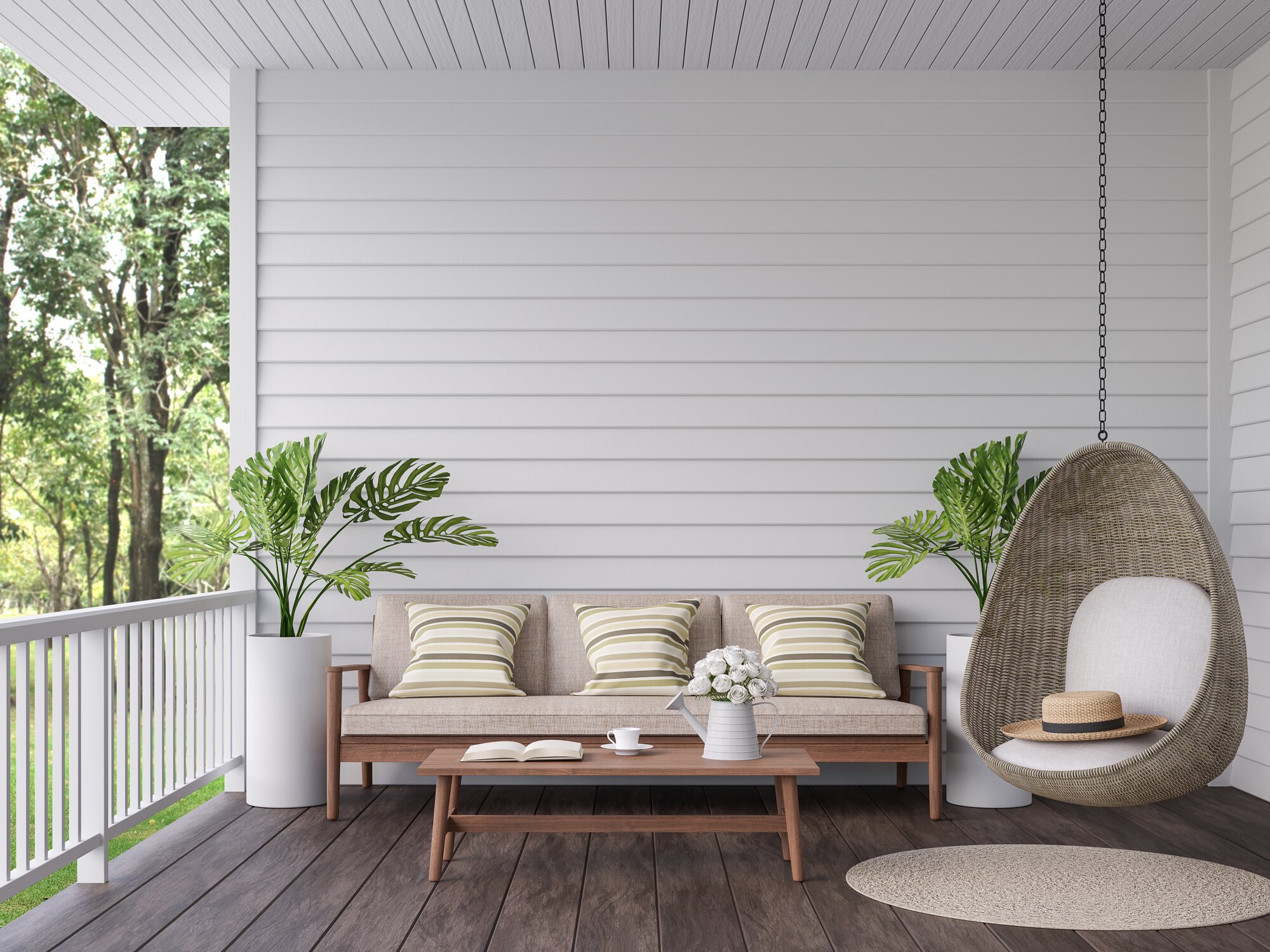How To Clean Outdoor Furniture


It happens to everyone — being a little lax about cleaning outdoor furniture, forgetting to wipe it down before storing it, or thinking your patio sets are invincible against the elements. If you can’t remember the last time you cleaned your outdoor furniture, here are different ways to spruce up your setup.
The basic tools you will need to clean any patio, garden, or porch furniture include a garden hose, a cleaning solution containing warm water and gentle detergent, and a soft bristle brush, sponge, or cloth. Let’s get started:
Choose a sunny and dry day to clean your outdoor furniture. This will prevent the growth of rust, mildew, and mold.
Follow the care labels for any fabric and upholstery, including all cushions, pillows, and covers for proper maintenance.
Always wear protective gloves, eyewear, and a mask when using chemicals and sanding materials.
Use a soft-bristled brush or a cloth to dust off any loose dirt, cobwebs, or leaves gathered on your outdoor furniture. For faster results and easier cleanup, use a vacuum cleaner to remove dust and debris from the fabric surfaces.
Use this simple homemade cleaning solution:
Invest in appropriate protective paints, coatings, or polishes available to preserve the lifespan, color, and shine of various outdoor furniture materials.
Regularly clean your outdoor furniture to make general upkeep less time-consuming, especially with wicker and mesh pieces.
When not in use, store your outdoor furniture in a cool, dry, and shaded place. You can also cover it with a waterproof cover or a tarp to protect it from natural elements.
Each outdoor furniture material requires a different cleaning technique. From metal to wicker, learn how you can freshen up outdoor furniture of various materials so it’s spic-and-span.
Hardwood or softwood furniture can bring a cozy and warm ambiance to any exterior space. Their natural beauty is aesthetically pleasing until the golden hues turn patina gray, mildew forms, or the surfaces crack and splinter. Here are steps to keep your wood furniture sturdy and elegant:
Brush off and wipe down any grime collecting on the surfaces.
Clean any harder-to-remove residue by gently scrubbing the area with a soft-bristle brush or microfiber towel and cleaning solution (ingredients are listed above). Commercial wood cleaners are available, but make sure to read the labels carefully. When they’re not diluted properly, some chemicals in cleaners can harm woods like wicker and painted wood.
Rinse with clean water to remove any cleaning solution. If you have access to a garden hose, keep the pressure on the gentler side to prevent damaging the wood.
Check the sealant and paint on your wood furniture for scratches, dents, or chips. If there are any minor damages, use fine-grit sandpaper to smooth them out, remove wood dust, and apply a new protective sealant coat.
Apply wood oil, wax, or polish to your outdoor furniture once or twice a year to nourish and moisturize the wood, helping enhance its shine and color. You can also use a UV-resistant product to prevent fading or discoloration from the sun.
If your wooden outdoor furniture has any mildew or mold, use a solution of one part bleach and four parts water. Apply the solution with a spray bottle or a cloth and let it sit for 15 minutes. Then rinse it off with clean water and dry it thoroughly.
Wicker is a style of weaving, and the materials used to make this style range from rattan to bamboo, cane, and synthetic resin. Before using any wood cleaner, make sure you know what material was used to create your wicker furniture. Here are some pro tips for cleaning and maintaining wicker furniture:
For monthly cleaning, wipe the furniture down or vacuum it with the soft brush attachment.
For seasonal cleaning, use a cleaning solution (ingredients are listed above) or a wicker cleaner. With a soft-bristled brush, move gently in a circular motion to loosen and remove any grime between the woven patterns. Thoroughly rinse the furniture down with clean water or a hose. Pat down excess water and let it dry in the sun or a well-ventilated area.
For wicker pieces with a lacquer finish, we recommend putting on a new coat of paste wax after they are clean and dry to maintain water resistance.
For non-white, natural wicker, and wood furniture, expert cleaners recommend wiping them down with lemon oil twice a year after cleaning. Lemon oil protects your furniture from insects and molds and keeps away dirt and dust.
For storage during the wet and colder months, ensure the furniture is clean and dry to prevent the growth of mildew and mold.
Metal patio furniture is chosen for its longevity, durability, and easy maintenance. Along with its clean lines and elegant allure, outdoor metal furniture needs less maintenance than wood furniture to keep its luster. Here are some great tips for preserving your metal furniture for the long haul:
One of the simplest ways to clean metal patio furniture is by routinely dusting off dirt and debris with a damp cloth and allowing it to dry.
For caked-on grime, use the cleaning solution (ingredients are listed above) with a non-abrasive cloth or a soft-bristled brush. Then wipe down with a clean, damp towel or rinse it with a garden hose. Make sure you avoid alkaline cleaners that can cause oxidation.
For aluminum and stainless steel furniture, use a white vinegar and water mixture (1:1 ratio) for the cleaning solution.
Check for cracks in the paint or coated finish that may lead to rust. Often metal furniture is sealed in a protective layer, but it can fade with time, use, or external elements. Repair affected areas with protective paint or varnish.
Spotted rust? Don’t wait to address it; it will spread and compromise the furniture’s structure. You can either:
For extra protection against rust, use 1–2 coats of automotive paste wax or naval jelly.
Plastic and hard resin patio furniture are inexpensive and are the easiest outdoor furniture to maintain. Here are some ways to keep your plastic outdoor furniture looking clean and new:
For daily use, simply spray it down with a hose. After your furniture has thoroughly been dried, apply a thin coat of paste wax for protection.
For dirt, grime, and cobwebs, wipe your furniture down using a mixture of warm water and mild soap in a bucket.
For colored plastic furniture, we recommend a mixture of a quart of water and ¼ cup of vinegar to maintain its hue.
For moldy spots, mix ¼ cup of bleach and a gallon of water. Use a soft-bristled brush and gently scrub the affected areas. If the mold spot is stubborn, try leaving the mixture on for up to fifteen minutes before rinsing it off and drying it completely.
For a longer lifespan, make sure your store your plastic furniture when not in use. While the sun can degrade plastic, keeping your furniture out during cold seasons can also lead to brittleness and cracking.
Outdoor concrete furniture takes modern styling to the next level with its minimalistic design. As one of the heaviest and most durable options, it can stay outside year-round, but can still benefit from routine cleaning. Here are some easy tips to keep your concrete furniture looking fresh:
To clean concrete furniture, use warm water and mild soap. Chemicals, vinegar, and baking soda can deteriorate the material and damage the surfaces.
Because concrete is porous, clean up any spills immediately to avoid stains.
When the cleaning tips listed here no longer keep your outdoor furniture looking new, or things start to creak or feel unsteady, it might be time to completely upgrade your backyard’s style and design. Browse furniture.com’s selection of patio furniture and decor to enjoy the outdoors in style and comfort this summer.






